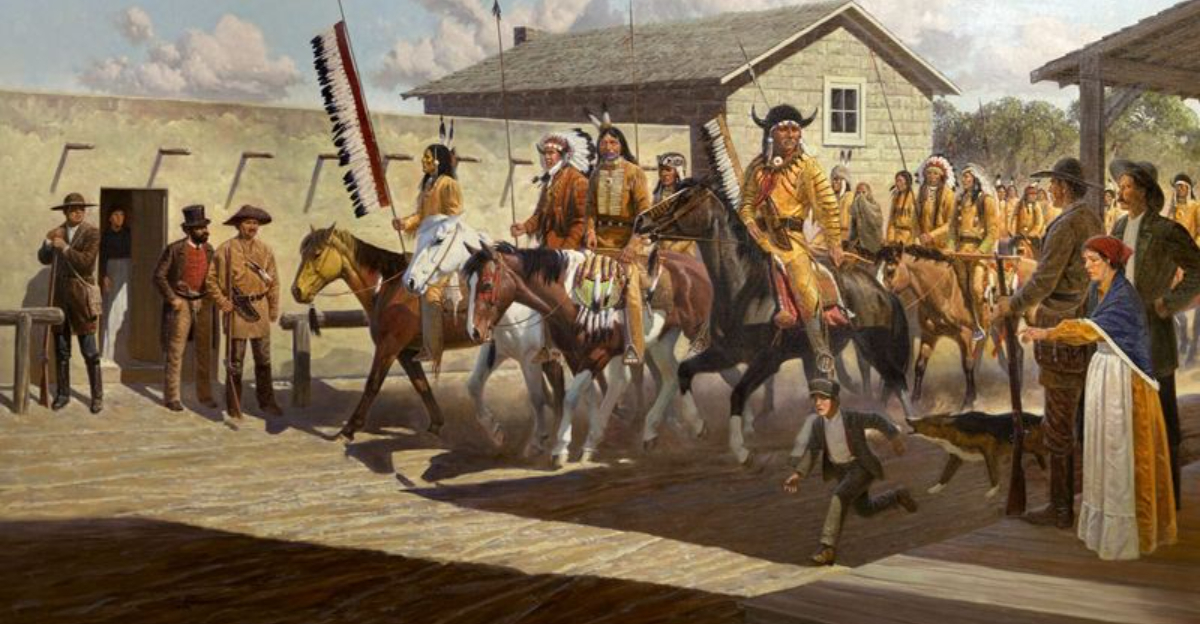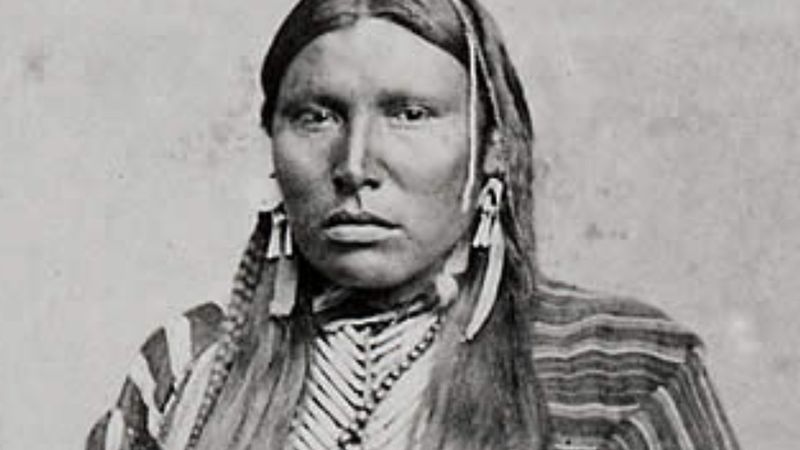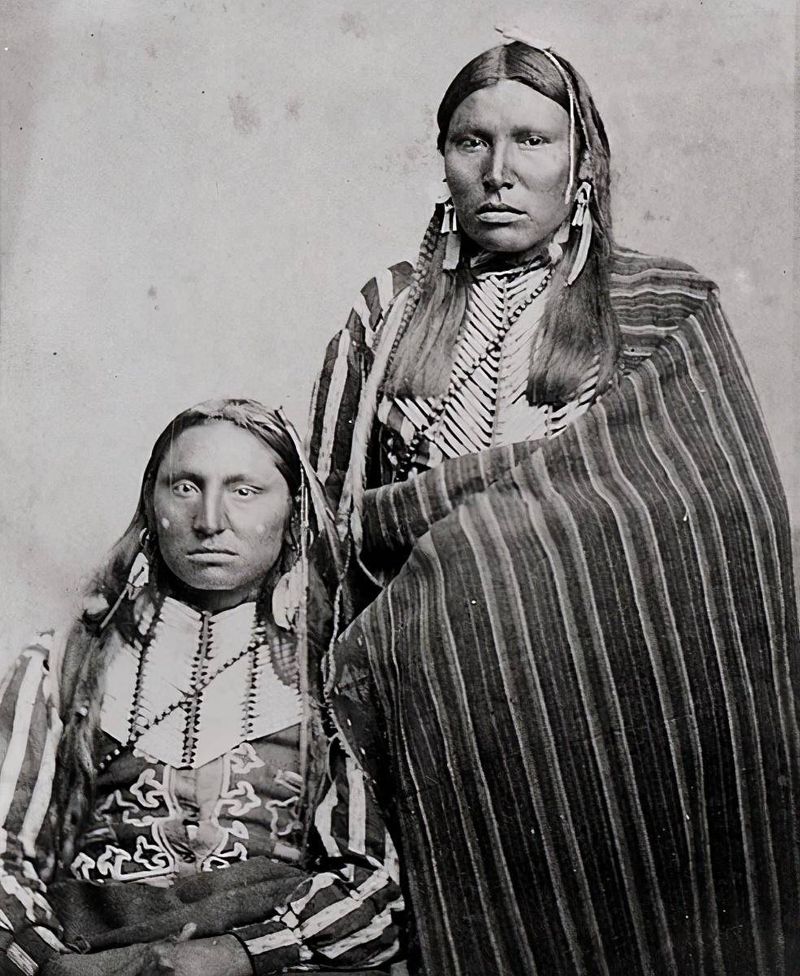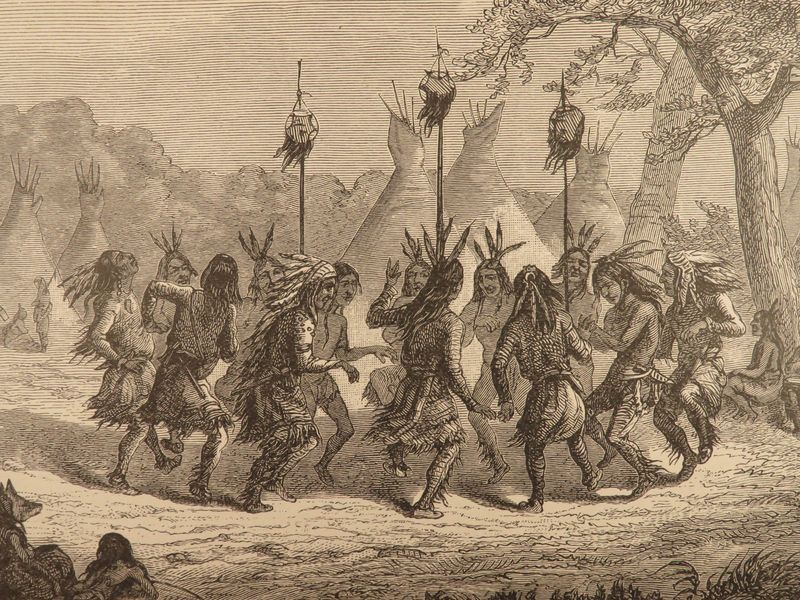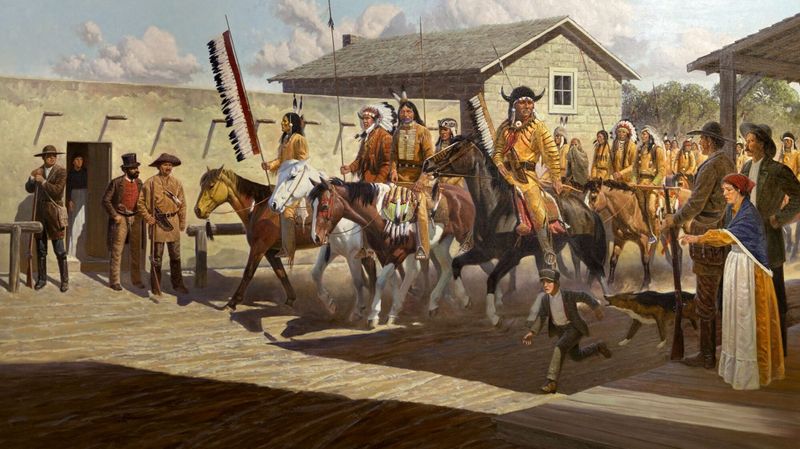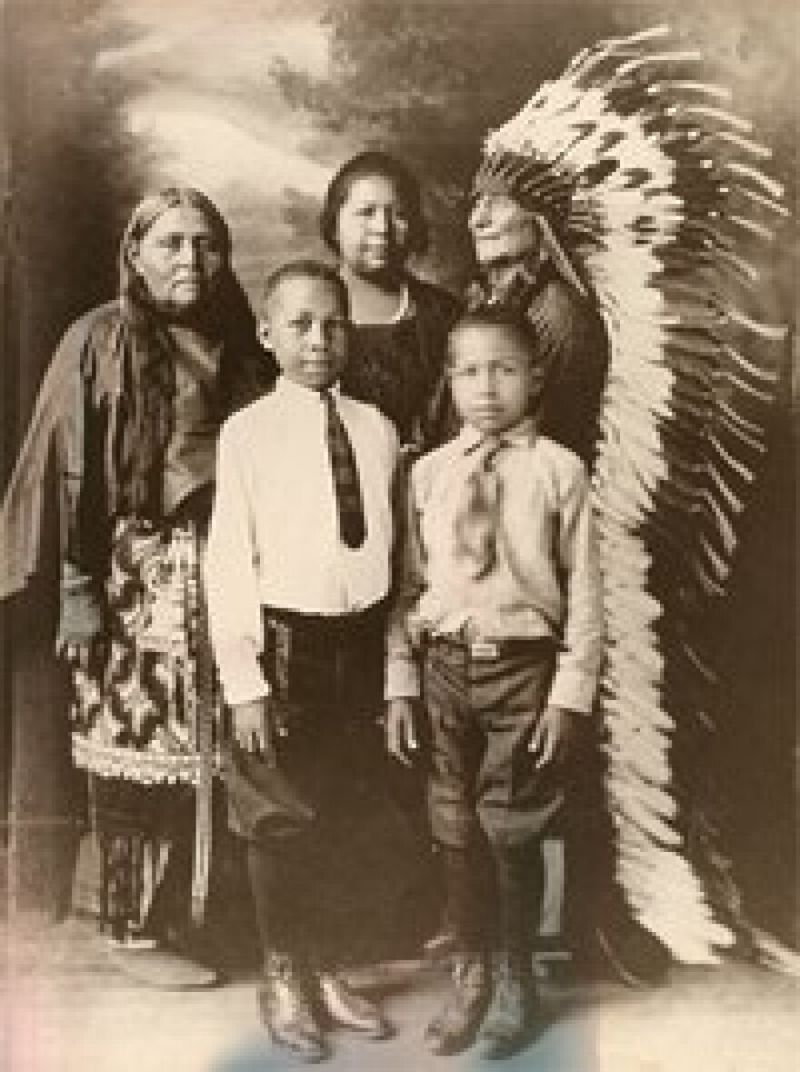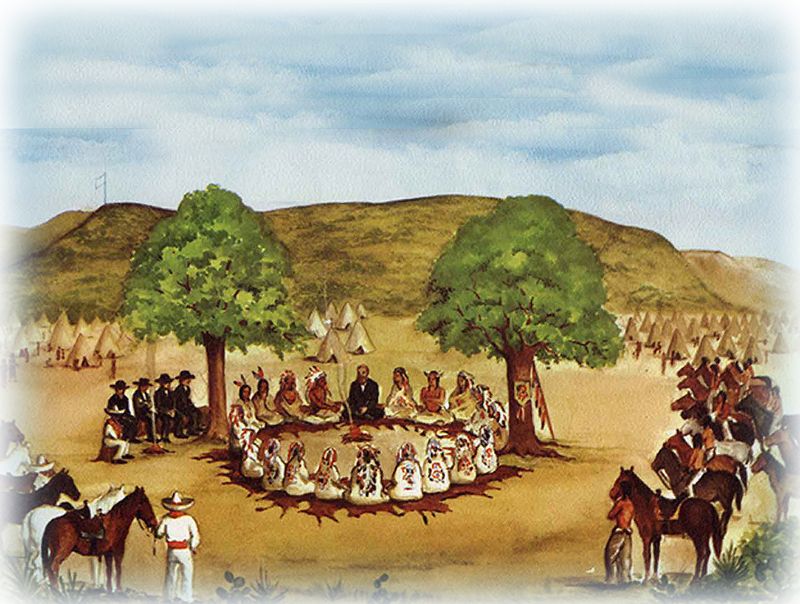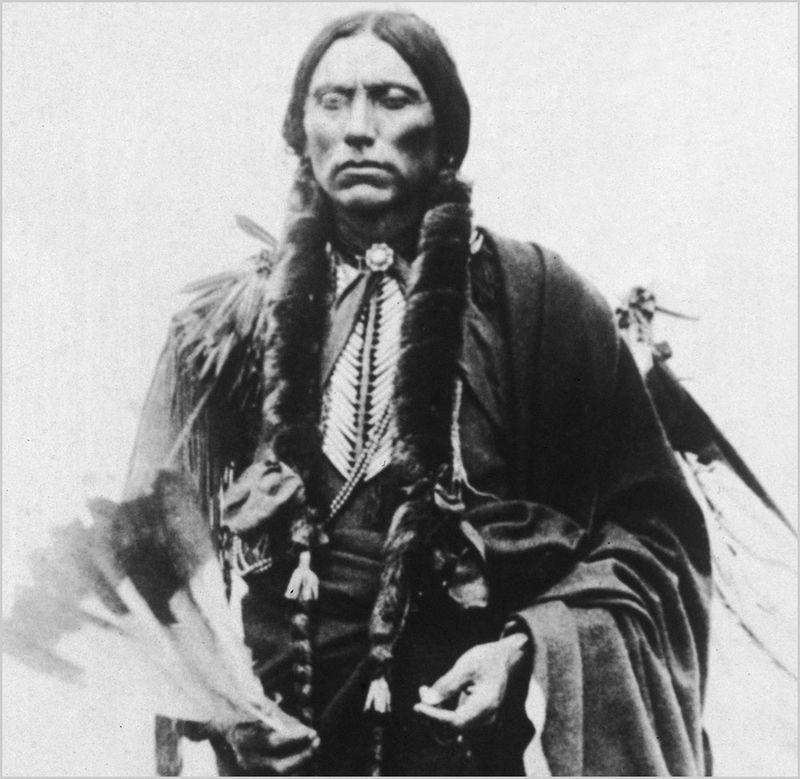Explore the harrowing and lesser-known practices employed by the Comanche tribe on their captives.
These practices, often brutal and intricate, were deeply embedded in the cultural and social fabric of the Comanche society.
This post delves into nine such practices, revealing a side of history often glossed over in traditional narratives.
1. Brutal Initiation: Captives Were Often Tortured
Captives faced a harsh initiation upon capture, especially adult males. These initiations were not mere punishments but tests of endurance and courage. Silence amidst torture could elevate a captive’s status. The ability to withstand pain without showing distress was seen as honorable.
Prisoners were subjected to various tortures, including beatings and burns. This brutal practice was a testament to the Comanche’s fierce warrior culture. It was a rite that separated the strong from the weak.
Enduring these ordeals could earn a captive a form of respect among the Comanche, though it rarely altered their fate.
2. Not All Captives Were Treated Equally
Captive treatment varied widely based on age, sex, and ethnicity. Adult men often met with lethal ends or severe torture, while women and children faced different destinies. Women could be exploited as laborers or used in trades.
Children, particularly the young, were more likely to be adopted into the tribe. Their innocence made them prime candidates for assimilation.
The fate of a captive was unpredictable, hinging on the whims of the tribe. This disparity in treatment underscored the complex social dynamics within the Comanche community.
3. Cultural Assimilation of Children
Young captives were often absorbed into Comanche society, erased of their past identities. They were renamed, re-educated, and fully integrated, making them forget their origins.
These children sometimes grew into loyal warriors or tribal members, embracing their new lives wholeheartedly. The process of assimilation was thorough, and their transformation complete.
This practice not only bolstered the tribe’s numbers but also spread Comanche influence. It was a strategic move that ensured cultural continuity and expansion across generations.
4. Captive Women Were Both Victims and Assets
Women captives faced a dual existence, enduring forced labor and exploitation yet holding notable value. They could be bartered, serving as valuable trade commodities for essential goods.
Sexual exploitation was a grim reality, yet their potential for ransom or trade could improve their circumstances. Their dual role was both a curse and a currency.
These women navigated a complex social landscape, balancing survival with the hope of return. They were integral to the tribe’s economy and social structure.
5. Scalping Was Both Symbolic and Strategic
Scalping extended beyond battlefield bravado, serving as a chilling symbol of victory and prowess. Captives, too, faced this brutal fate, their scalps coveted as trophies.
This practice elevated a warrior’s status, making scalps a currency of honor. It was a testament to the warrior’s strength and cunning.
The strategic use of scalping sent clear messages to enemies and allies alike, reinforcing tribal dominance and fearlessness in warfare.
6. Psychological Warfare Was Intentional
The Comanche were masters of psychological warfare, using it to instill fear and deter aggression. Mutilated bodies of captives were sometimes returned to send a potent warning.
These acts served as a grim reminder of the consequences of crossing the Comanche. The psychological impact was profound and deliberate.
It was a tactic that played on the fears and superstitions of rival tribes, ensuring Comanche dominance through terror and awe.
7. Some Prisoners Were Turned Into Slaves
Slavery was ingrained in Comanche society, with captives often forced into lifelong servitude. These slaves performed domestic tasks or herded animals, contributing to the tribe’s economy.
Women and older children were particularly vulnerable, their fates sealed in servitude. The harsh life of a slave was a testament to the stark realities of captivity.
Despite their bondage, some managed to carve out niches within the tribe, adapting to their new roles, though freedom remained a distant dream.
8. Ransom Was a Lucrative Practice
The Comanche were adept negotiators, using ransom as a vital tool in tribal diplomacy. Captives were bartered for guns, horses, or precious goods, underscoring their value.
Ransom negotiations were high-stakes, often involving protracted discussions. The captives’ families faced the dilemma of paying hefty ransoms or losing loved ones forever.
This practice enriched the Comanche, providing them with resources while maintaining their fierce reputation. It was as much a part of survival as it was of strategy.
9. A Few Became Comanche by Choice
In rare cases, captives chose to remain with the Comanche, having embraced their new lives wholly. These individuals adapted to the tribe’s customs and language, finding a sense of belonging.
The choice to stay was a profound decision, reflecting acceptance and integration. They became part of the tribe, contributing as equals.
This rare occurrence highlighted the allure and influence of Comanche culture, capable of transforming captives into devoted members.
